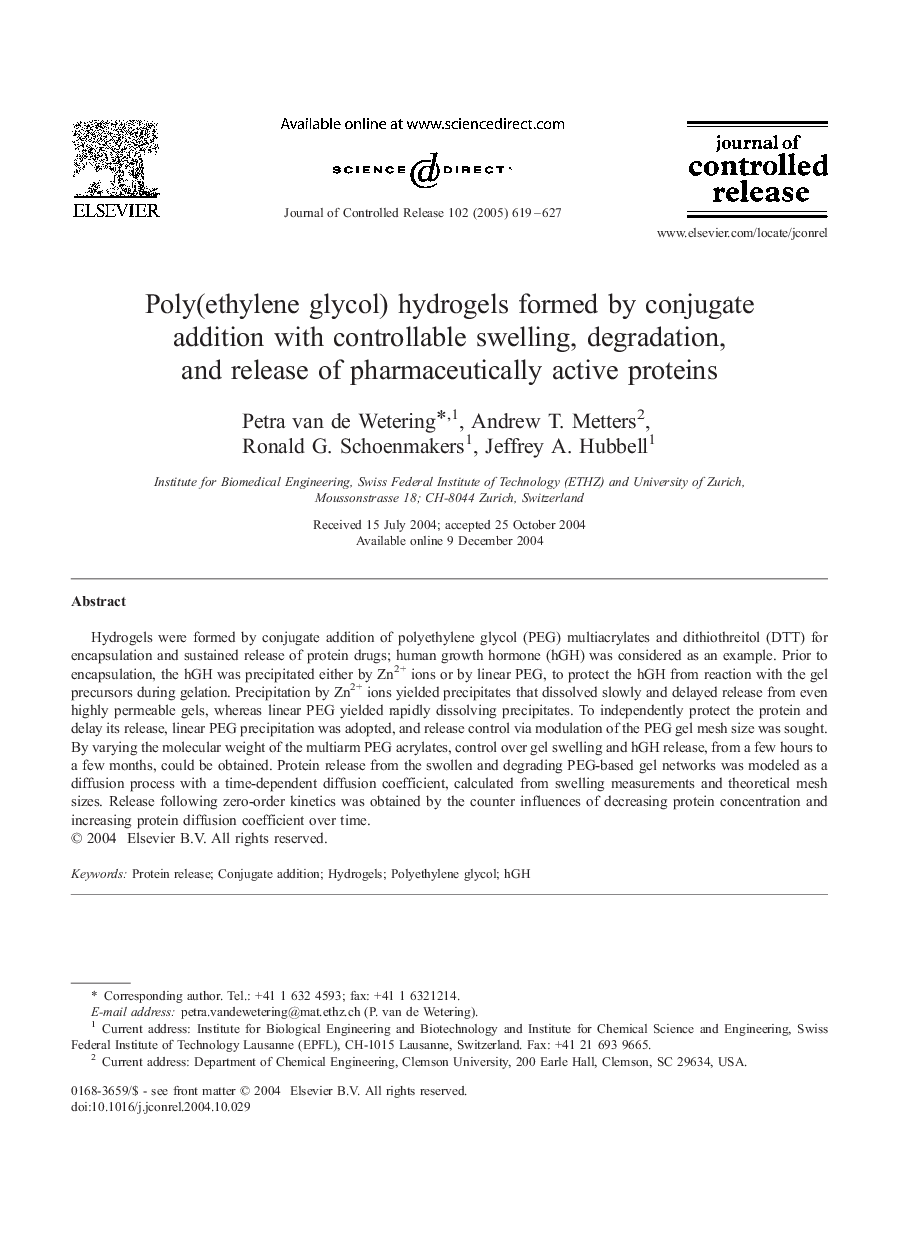| کد مقاله | کد نشریه | سال انتشار | مقاله انگلیسی | نسخه تمام متن |
|---|---|---|---|---|
| 10613453 | 986888 | 2005 | 9 صفحه PDF | دانلود رایگان |
عنوان انگلیسی مقاله ISI
Poly(ethylene glycol) hydrogels formed by conjugate addition with controllable swelling, degradation, and release of pharmaceutically active proteins
دانلود مقاله + سفارش ترجمه
دانلود مقاله ISI انگلیسی
رایگان برای ایرانیان
کلمات کلیدی
موضوعات مرتبط
مهندسی و علوم پایه
مهندسی مواد
بیومتریال
پیش نمایش صفحه اول مقاله

چکیده انگلیسی
Hydrogels were formed by conjugate addition of polyethylene glycol (PEG) multiacrylates and dithiothreitol (DTT) for encapsulation and sustained release of protein drugs; human growth hormone (hGH) was considered as an example. Prior to encapsulation, the hGH was precipitated either by Zn2+ ions or by linear PEG, to protect the hGH from reaction with the gel precursors during gelation. Precipitation by Zn2+ ions yielded precipitates that dissolved slowly and delayed release from even highly permeable gels, whereas linear PEG yielded rapidly dissolving precipitates. To independently protect the protein and delay its release, linear PEG precipitation was adopted, and release control via modulation of the PEG gel mesh size was sought. By varying the molecular weight of the multiarm PEG acrylates, control over gel swelling and hGH release, from a few hours to a few months, could be obtained. Protein release from the swollen and degrading PEG-based gel networks was modeled as a diffusion process with a time-dependent diffusion coefficient, calculated from swelling measurements and theoretical mesh sizes. Release following zero-order kinetics was obtained by the counter influences of decreasing protein concentration and increasing protein diffusion coefficient over time.
ناشر
Database: Elsevier - ScienceDirect (ساینس دایرکت)
Journal: Journal of Controlled Release - Volume 102, Issue 3, 16 February 2005, Pages 619-627
Journal: Journal of Controlled Release - Volume 102, Issue 3, 16 February 2005, Pages 619-627
نویسندگان
Petra van de Wetering, Andrew T. Metters, Ronald G. Schoenmakers, Jeffrey A. Hubbell,